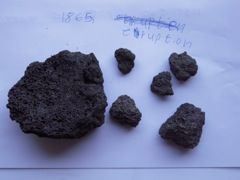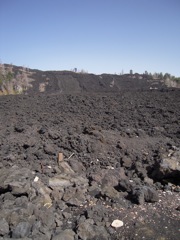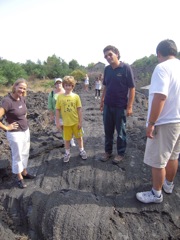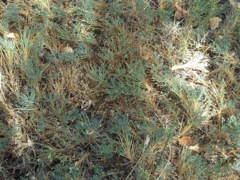Etna, the sequel
4. Types of Rock present: each eruption produced the same rock:
The rocks have a lot of holes; they look like fossilized honeycomb. They were black, but some were a little bit read because of the iron (about 10% the geologist said), and the most recent ash a little bit like oily soap color.
5. Types of flow. Most of the lava was a’a — that means it would take an hour to cross a field, it sounds crunchy to walk on, because the rocks are not set in place and move around, and grind against each other, and are sharp. This from 2002:
But I also saw some pahoihoi lava, which means it was smooth and flat, or smoother and flatter and was easier to cross.
The smoother stuff was hotter when it came out of a vent just in front of me…
The less smooth makes wave formations!
5.5 Plants and animals! This plant, called Holy Thorn, only grows in Mt Etna’s soil; it has two-inch thorns, and the Catholics believe that the thorn-crown that Jesus wore was made of Holy Thorn. It is very common on Mt Etna.
There were a lot of pine trees, and a lot of birch trees. Birch trees are not common in sicily, but remain here from the Ice Age, when northern plants made it south — because of Etna’s unusual soil and lower temperature.
As for animals, not many live there beside rabbits, foxes, wildcats, porcupines. Wolves have been hunted to extinction in Sicily; the last one was shot in 1928. There are no large mammals. I did see a hawk.





